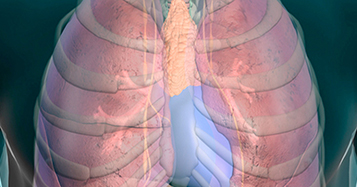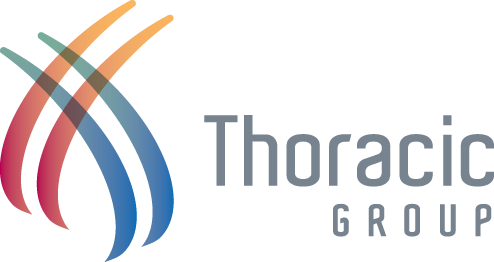About VATS
 Video Assisted Thoracic Surgery (VATS) is a minimally invasive surgical procedure used to access the chest cavity to operate on the lung, mediastinum and pleura.
Video Assisted Thoracic Surgery (VATS) is a minimally invasive surgical procedure used to access the chest cavity to operate on the lung, mediastinum and pleura.
Primarily, VATS is utilized to treat conditions such as cancer, pneumothorax, infection, cysts and other thoracic disorders – providing patients with significant benefits.
Is VATS right for me?
For all potential chest surgery patients – particularly those deemed ineligible for a traditional thoracotomy due to certain risk factors or co-existing medical conditions – VATS presents a viable option for treatment with extraordinary effectiveness and fast recovery times.
VATS is a better option than the traditional thoracotomy, which we never view as being a better choice for our patients.
What are the key benefits of VATS?
- Just four one inch incisions (a traditional thoracotomy requires an incision of 10-14 inches as well as unavoidable injury to one or more ribs and damage to muscles)
- A one to two day hospital stay (patients of a typical thoracotomy require stays of 7-10 days)
- A markedly reduced in recovery time as compared to the traditional thoracotomy
- A significantly reduced complication rate due to minimal invasion (less than five percent of VATS patients experience post-surgery complications compared to 30 percent of thoracotomy patients)
Simply put, VATS minimizes surgical and health risks – allowing a speedier recovery with less scarring, less pain, and less complications.
What happens during a VATS procedure?
VATS is performed using a small video camera attached to a thoracoscope, which is introduced into the patient’s chest through one of four small incisions. The video camera then transmits magnified images of the chest cavity onto strategically positioned monitors in the operating room – providing the surgeons with an unparalleled view inside the entire chest. The images are of the same quality as high definition television. Concurrently, the three remaining incisions serve as entry ports for the surgical instruments necessary to carry out the procedure.
How long does VATS recovery take?
Recovery is swift. Most VATS patients eat and walk within hours of the procedure, and most (or majority) return home within one to two days.
Because VATS avoids the large, destructive and painful chest incision associated with a traditional thoracotomy, patients experience fewer complications and rarely suffer from severe and chronic chest wall pain. The short-lived discomfort caused by the smaller VATS incisions is generally well controlled with oral medications.
To inquire further about the VATS procedure and to have your own personal questions answered, please feel free to call Thoracic Group at:
(732) 247-3002 or (732) 637-6348.
